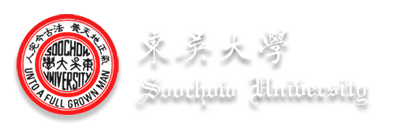The Ching-kuo Chi-Hai Cultural Park is a museum and park that was created from the renovation of Ching-kuo’s home compound. The entire park covers about 9.8 acres and contains both Ching-kuo’s house and a permanent exhibition, both open to the public. The first stop in the park is Ching-kuo’s home, where you can get a guided tour throughout his old home and see where he used to live with his wife Faina. This is where he lived from the years of 1958 to 1977, where he eventually died in his own home.
The next stop in the park is the exhibition hall. The exhibition hall depicts artifacts and the history and life of Ching-kuo. The first showroom is broken into six units according to the website. The first is the memorabilia of Ching-kuo. This is where his major events and important actions are depicted, in both photo and historical texts. The second unit is his presidential story. This is where his personality and good actions towards his citizens during his presidency are depicted. The third unit depicts critical moments in his life and how these affected him and his future. The fourth unit shows “Governance of Ching-kuo ''. This includes the assets, construction, and political achievements he passed down to future generations of Taiwan. The fifth unit shows the “smile” of Ching-kuo. This unit is just pictures and stories from when he would visit citizens in the countryside and outer cities. The sixth unit of the first showroom shows the strength of Ms. Fang Liang. Ms. Fang Liang is Ching-kuo’s wife and this unit is dedicated to her as she kept the face of their family and allowed him to focus on his political affairs. The second showroom shows the personal side of Ching-kuo and his hobbies and diaries. It also depicts the writing and memories of his staff throughout his presidency. This showroom allows the public to connect more with Ching-kuo.
Our Thoughts
The Ching-kuo Chi-Hai Cultural Park offers a different perspective from the point of view of Chiang Kai-shek’s son. It is interesting to hear about how their relationship affected his son and made him into the leader he was. This site is a nice location for a transition from Chiang Kai-shek's authoritarian ruling style, to his son Ching-kuo’s more democratic ruling style.
